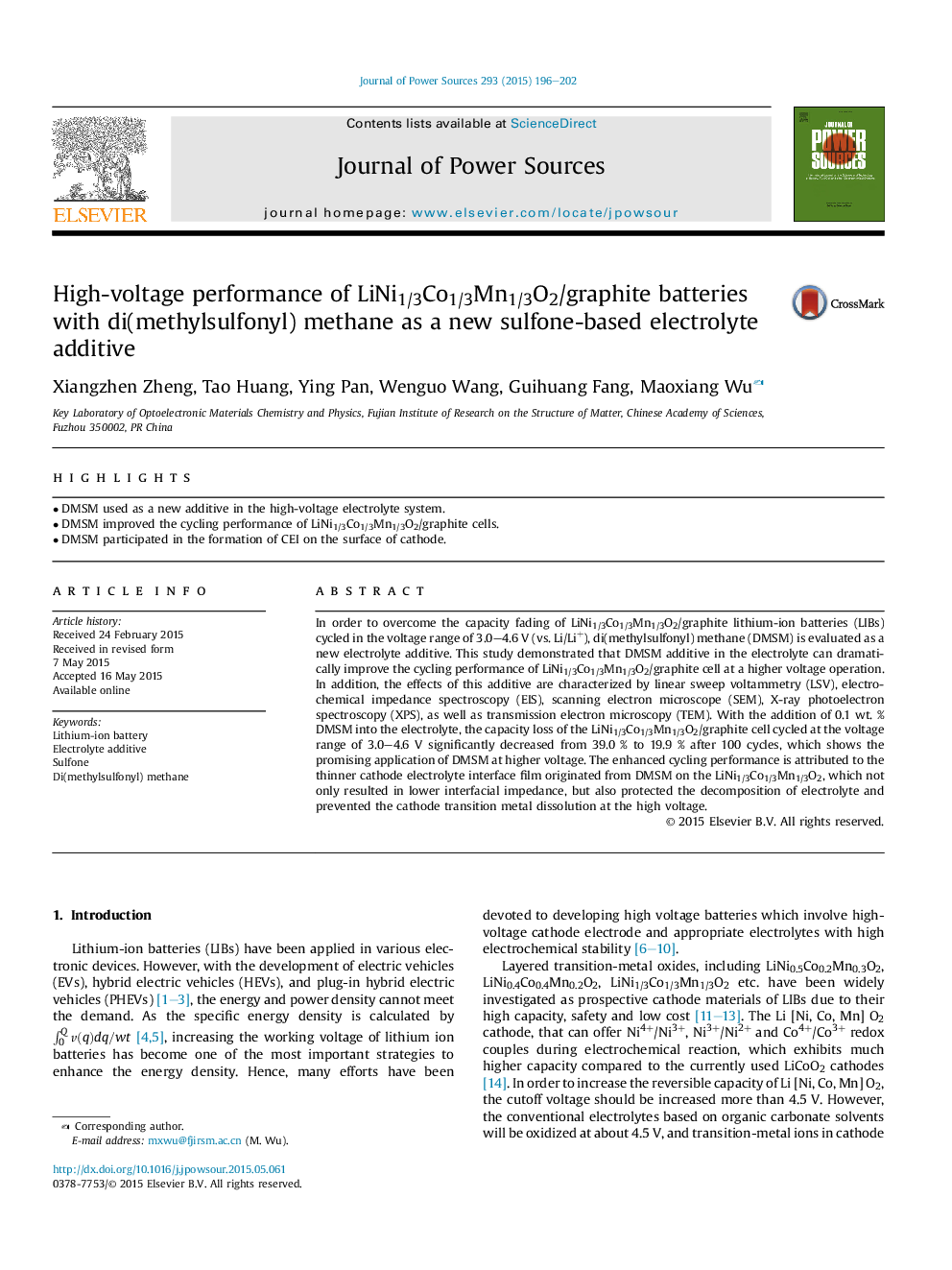| Article ID | Journal | Published Year | Pages | File Type |
|---|---|---|---|---|
| 7731436 | Journal of Power Sources | 2015 | 7 Pages |
Abstract
In order to overcome the capacity fading of LiNi1/3Co1/3Mn1/3O2/graphite lithium-ion batteries (LIBs) cycled in the voltage range of 3.0-4.6Â V (vs. Li/Li+), di(methylsulfonyl) methane (DMSM) is evaluated as a new electrolyte additive. This study demonstrated that DMSM additive in the electrolyte can dramatically improve the cycling performance of LiNi1/3Co1/3Mn1/3O2/graphite cell at a higher voltage operation. In addition, the effects of this additive are characterized by linear sweep voltammetry (LSV), electrochemical impedance spectroscopy (EIS), scanning electron microscope (SEM), X-ray photoelectron spectroscopy (XPS), as well as transmission electron microscopy (TEM). With the addition of 0.1Â wt. % DMSM into the electrolyte, the capacity loss of the LiNi1/3Co1/3Mn1/3O2/graphite cell cycled at the voltage range of 3.0-4.6Â V significantly decreased from 39.0 % to 19.9 % after 100 cycles, which shows the promising application of DMSM at higher voltage. The enhanced cycling performance is attributed to the thinner cathode electrolyte interface film originated from DMSM on the LiNi1/3Co1/3Mn1/3O2, which not only resulted in lower interfacial impedance, but also protected the decomposition of electrolyte and prevented the cathode transition metal dissolution at the high voltage.
Related Topics
Physical Sciences and Engineering
Chemistry
Electrochemistry
Authors
Xiangzhen Zheng, Tao Huang, Ying Pan, Wenguo Wang, Guihuang Fang, Maoxiang Wu,
